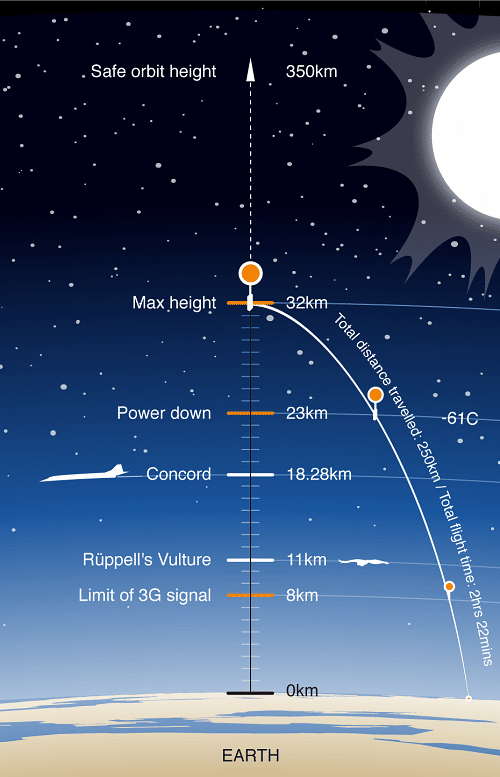Nokia Lumia 800 takes a balloon ride to 32km altitude in the name of science
Putting a smartphone on a helium balloon and having it fly high up in the sky has proven a popular pastime (there was even an iPad that braved the high altitudes), but it turns out serious scientist do it too as low-cost observation tools. The ASTRA project at South Hampton university has a thing for Windows Phone handsets and the latest was a Nokia Lumia 800.

As part of the ASTRA 10 series of flights, a Lumia 800 soared as high as 32km with nothing to help it face the cold or maintain connectivity. And conditions high up in the atmosphere are pretty rough.
The Nokia Lumia 800 maintained data connectivity and kept sending reports until it was as high up as 8km. Reportedly, other devices only lasted until they reached 5km height. Anyway, the 800 kept climbing and only shut down at 23km when external temperature dropped to the scary -61°C. It managed to snap 2GB of photos with its camera along the way. The balloon reached a maximum altitude of 32km (where it got even colder, -70°C) and the WP7.5 phone survived the trip, which took 2 hours 22 minutes in total.

The ASTRA team commented that there was no extra hardware to help out the Lumia 800. Here’s what the team had to say about the phone:
We knew the Lumia was very robust. With other phones we’ve had to include an extra battery and a heater. We didn’t need to do that with the Lumia – it was the best. The Lumia still had data connectivity at 8km above the earth, it’s definitely got a good aerial in there. We didn’t do this for fun – we used the Nokia Lumia 800 as a serious scientific tool, and the results were remarkable.
Previous experiments, ASTRA 7, used an HTC Trophy (another Windows Phone handset). Those earlier experiments reached an altitude of 18.2km after 01:16h of flight.
You can check out the ASTRA project’s web page for more info on their various tests.
Featured
Categories
- Mobile phones
- Mobile software
- Mobile computers
- Rumors
- Fun stuff
- Various
- Android
- Desktop software
- Featured
- Misc gadgets
- Gaming
- Digital cameras
- Tablets
- iOS
- Desktop computers
- Windows Phone
- GSMArena
com - Online Services
- Mobile Services
- Smart Watches
- Battery tests
- BlackBerry
- Social Networks
- Web Browsers
- Portable Players
- Network Operators
- CDMA
- Windows
- Headphones
- Hands-on




 Samsung Galaxy S6 updated to Android 5.1.1: exploring the differences on video
Samsung Galaxy S6 updated to Android 5.1.1: exploring the differences on video Benchmarking Asus ZenFone 2 ZE551ML with Intel Atom Z3580 SoC and 4GB of RAM
Benchmarking Asus ZenFone 2 ZE551ML with Intel Atom Z3580 SoC and 4GB of RAM Your verdict on Android M, iOS 9 and Watch OS 2.0
Your verdict on Android M, iOS 9 and Watch OS 2.0 Oppo R7 battery life test
Oppo R7 battery life test HTC One E9+ performance benchmarks
HTC One E9+ performance benchmarks
Comments
Rules for posting